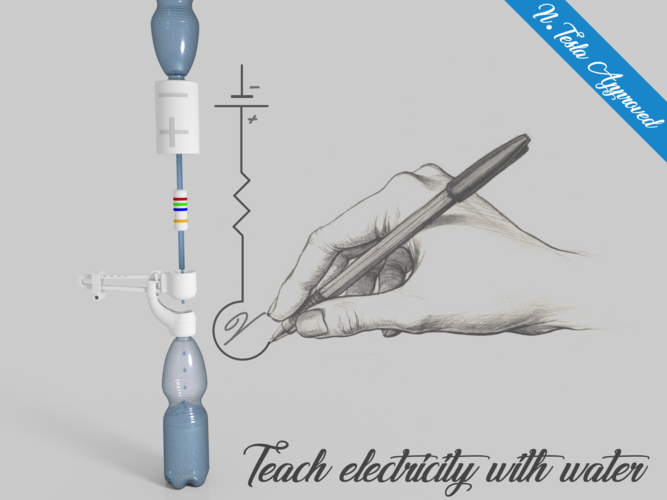
Teach electricity with water
pinshape
Because a Pinshape's bug, I must give you drive link to be able to share my zip file with all the needed parts. Summary It's difficult to understand electrical phenomena like this example: 2 resistances, each 1 Ohm, in series make 2 Ohms global resistance when 2 resistances in a bypass circuit make 0.5 Ohms resistance. This equation seems abstract but is easily demonstrable with the hydraulic analogy. Project: Teach Electricity with Hydraulic Project Name: Teach Electricity with Hydraulic Overview & Background: This project aims to teach students electrical phenomena by comparing fluid phenomena. Objectives: This project aims to better explain to students electrical phenomena, including current and voltage matters. But the interest does not stop there; this permits students to use 3D printers and introduce them to 3D modeling. For example, they could create new components such as diodes, transistors... Audiences: This project is dedicated to students aged 11-17 years old, particularly those in middle school 8th grade who are studying electricity in physics and chemistry programs. Subjects: Science Physical-Chemistry Technology Skills Learned (Standards): Testing Results Interpretation Working Group Lesson / Activity: Duration: I am not a teacher, but I estimate that a teacher could spend about 4 hours on this activity by having students work on graphics and other exercises simultaneously. It takes too many hours to print all parts, and half an hour to assemble them. Preparation: Students should have basic theoretical knowledge of electricity, including the various major components of a circuit and main principles. Material: 3D printed parts (make several resistances) O-rings (8.9 x 14.3 x 2.7 mm) 2 plastic bottles Transparent tube (diameter 10) Rubric & Assessment: Students succeed when they understand the link between hydraulic and electricity and when they imagine new components that they can print to improve the hydraulic circuit, such as switches, diodes, or capacitors. They can be assessed by questions on the relationship between electricity and fluids and by their research.
With this file you will be able to print Teach electricity with water with your 3D printer. Click on the button and save the file on your computer to work, edit or customize your design. You can also find more 3D designs for printers on Teach electricity with water.
